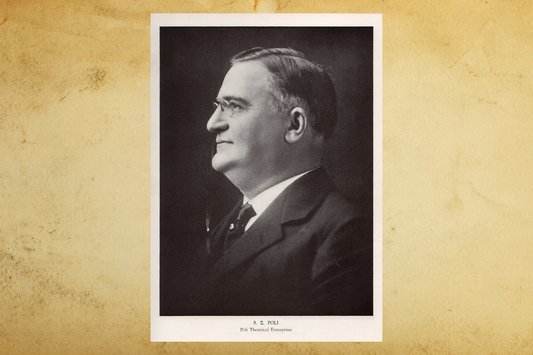On this strange Earth Day, we’re thinking about a strange, earthy man we covered in 2015.
* * *
Between 1852 and 1889, a man dressed in a quilt of leather patches paced back and forth between the Connecticut River and the Hudson. He spoke broken English and fluent French. He refused meat on Fridays and carried a well-worn prayer book.
For decades, “The Old Leatherman” lived in a network of caves and survived on handouts from the towns through which he passed. His 365-mile circuit took exactly 34 days to complete, and he walked it so regularly that housewives set their clocks by his rounds. A schoolteacher in Branford called recess whenever the Leatherman came down the road—a minor holiday that would arrive as predictable as the full moon—just another of Connecticut’s natural cycles.
sponsored by
From the outside, the Leatherman resembled a cast-iron furnace, but his inner fire burned cool. He was quiet, polite, even skittish. He never stole, begged or coerced sustenance from anyone, taking only what was offered, never stepping inside a home unless invited. Children grew to like him. Certain households took pride in feeding him.
If he ever met trouble in a place, he’d steer clear of it from that point on. In New Haven, a group of toughs poured liquor down his throat in the hope of getting his life story out of him. He didn’t tell and never returned to the city. In Hamden, which survived longer as a stop on his loop, a dead-end street called “Leatherman Trail” still makes reference to the vagabond.
Or so the stories go, anyway. Researching the Leatherman is like playing a game of telephone with the dead. Newspaper reports of the man began in 1852, but most of them contain heavy doses of hearsay, and neither his origins nor his name are known, cutting off fundamental avenues of inquiry.
That hasn’t kept him from sticking with us. Musicians from folk bands to Pearl Jam have expressed their fascination through song. The Leatherman even has his own PBS special. Yet he was only recently given the honor of a full historical treatment.
In 2008, Dan W. DeLuca published The Old Leather Man, an account of the vagrant’s life relying on firsthand accounts and the most credible newspaper reports. Through his research, DeLuca purports to dispel some popular misconceptions about the Leatherman—that he wandered the entire 360ish-mile circuit not for 30 years but for six, and that he wasn’t the heartbroken Frenchman—making penance for bankrupting his father-in-law’s leather business—one theory made him out to be.
According to historian Peter Hall, who appears in that PBS documentary, the Leatherman wandered at a time when local newspapers began airing unsympathetic solutions to the “tramp problem”—to “give them food, but to poison the food and kill them off,” for example, “or to take them out and shoot them.” The Connecticut Tramp Law of 1879 authorized the imprisonment of “all vagrants living without labor, or visible means of support, who stroll over the country without lawful occasion.”
Yet because of his popularity in the towns he frequented, the Leatherman was never arrested or poisoned. If anything, the sympathy people had for the Leatherman was at times too much for his own liking. Even after a troubling sore appeared on his lip and was noticed by those who knew him, he consistently refused lodging and even eluded the clutches of the Humane Society, which sought to give him medical treatment.
Not that there was a lot it could have done. The sore proved to be cancer, leading to his death in 1889 in a cave outside the town of Ossining, New York. An autopsy revealed him to be in his 50s—though he looked much older—and his leather suit weighed in at over 60 pounds. His body was buried in Ossining’s Sparta Cemetery.
The Leatherman has been cast in many lights. Most firsthand accounts characterize him as a benign vagabond, a wandering eccentric. Some speculated he was a distressed veteran of the civil war. Others saw him as a “true outdoorsman.” Pearl Jam’s lead singer, Eddie Vedder, identified with the stories of the man whose holistic rejection of the status quo fit well with the grunge philosophy Vedder helped usher in during the early 1990s.
Today the Leatherman exists in a limbo between history and lore, an amalgam of many of America’s most famous folk figures. He has something of Paul Bunyan’s frontiersmanship, Rip Van Winkle’s 20-year sleep and Huck Finn’s wanderlust. Of all such characters, his closest cousin may be Johnny Appleseed, another real-life wanderer who inadvertently walked himself into legend. Like Johnny, the Leatherman’s story combines the mystique of deeper purpose, the ideal of personal freedom and the heroism—or martyrdom—of the rugged individual, living by his wits within the great American wilderness.
Written by Daniel Shkolnik. This lightly updated story was originally published on April 28, 2015.








